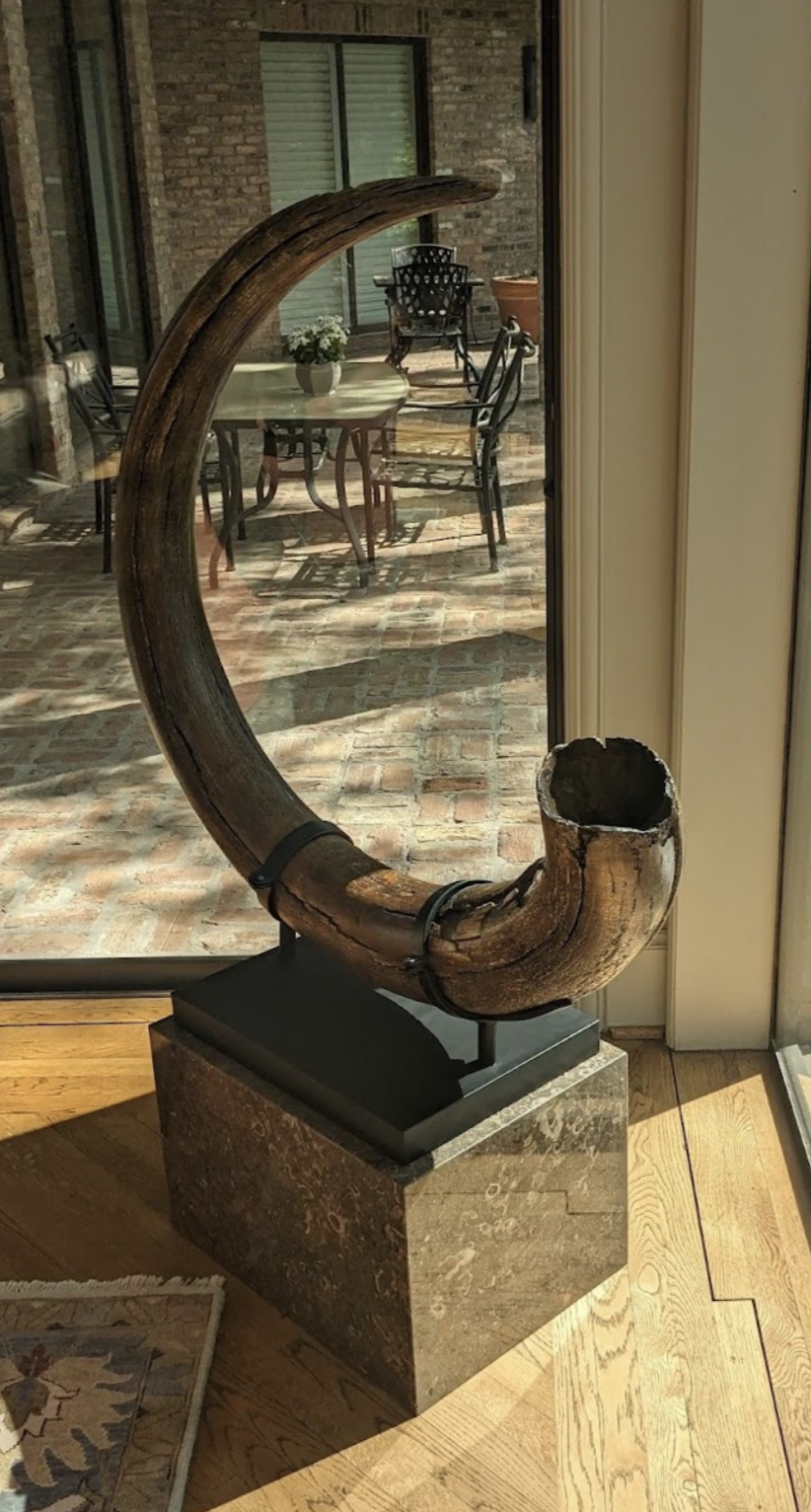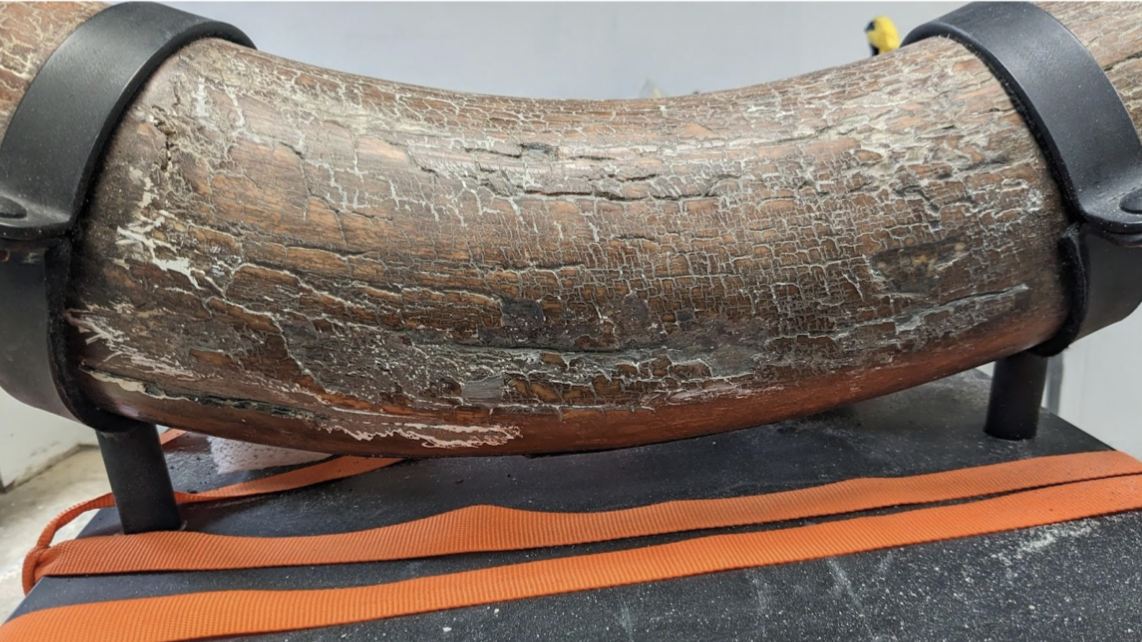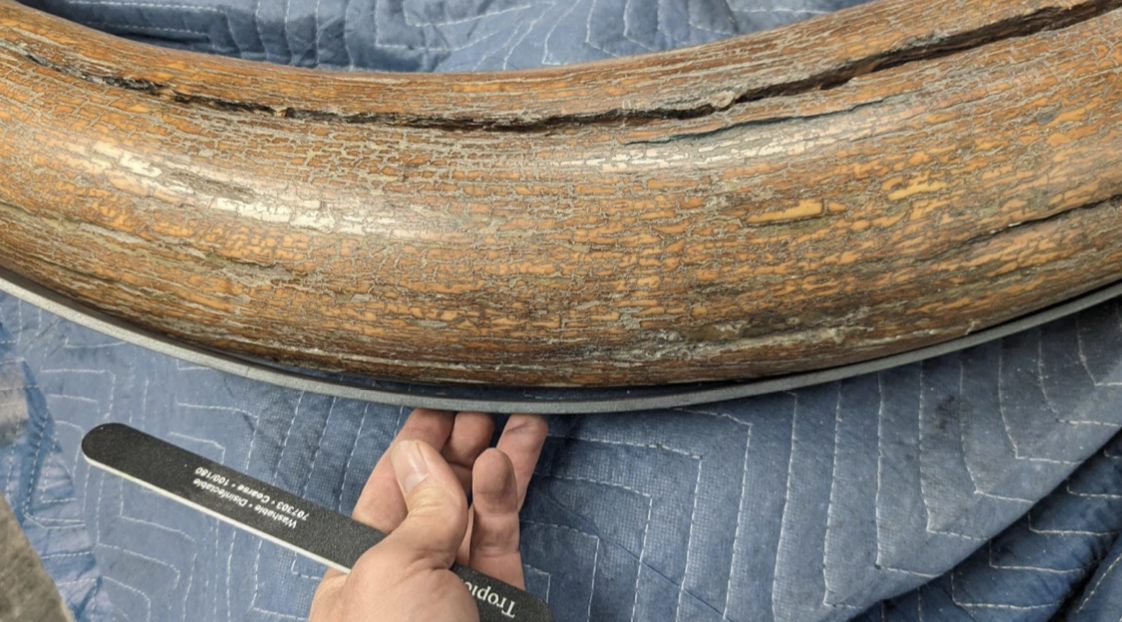
The mastodon, or mammut, roamed the earth in the late Miocene and early Pleistocene period, 10,000 to 11,000 years ago. These long-extinct mammals came from a line of ancient species that are distantly related to modern-day elephants. These ancient tusks have been found across the Northern Hemisphere, including the United States since the 19th century. Excavation records exist as early as 1799 in New York alone. Although tusks have been found for at least a century, climate change has expedited these discoveries. While permafrost melts in northern regions, including Russia, prehistoric bones and mastodon tusks have been unearthed in unprecedented numbers.

As the discoveries of these artifacts have changed with time, so have the methodology and philosophy regarding their conservation. Historic restorations focused on filling in and polishing the tusk to near perfection, hiding many of the features indicative of its age. In contemporary restoration, the goal is not perfection, but to allow the cracks and texture to show the ancient features of these artifacts.
This specific mastodon tusk evolved over time. Its cracks and imperfections were filled with many materials, including resin, vinyl ester, and other unknown substances. The tusk was coated in a tinted varnish which further obscured its detail and texture.

OnAim Conservation restored the tusk by removing the fillings and varnish to reveal the detail in the tusk. Instead of covering the cracks, as they were previously, the cracks were filled but left visible to highlight the natural features, patina, and prehistoric age of the object. OnAim also added additional supports to cushion and stabilize the tusk. Finally, the tusk was sealed using UV-protectant to shield the tusk from harmful light. This method does not obscure the ancient age of the tusk. It allows its unique features to show while protecting the tusk from physical and environmental harm.
